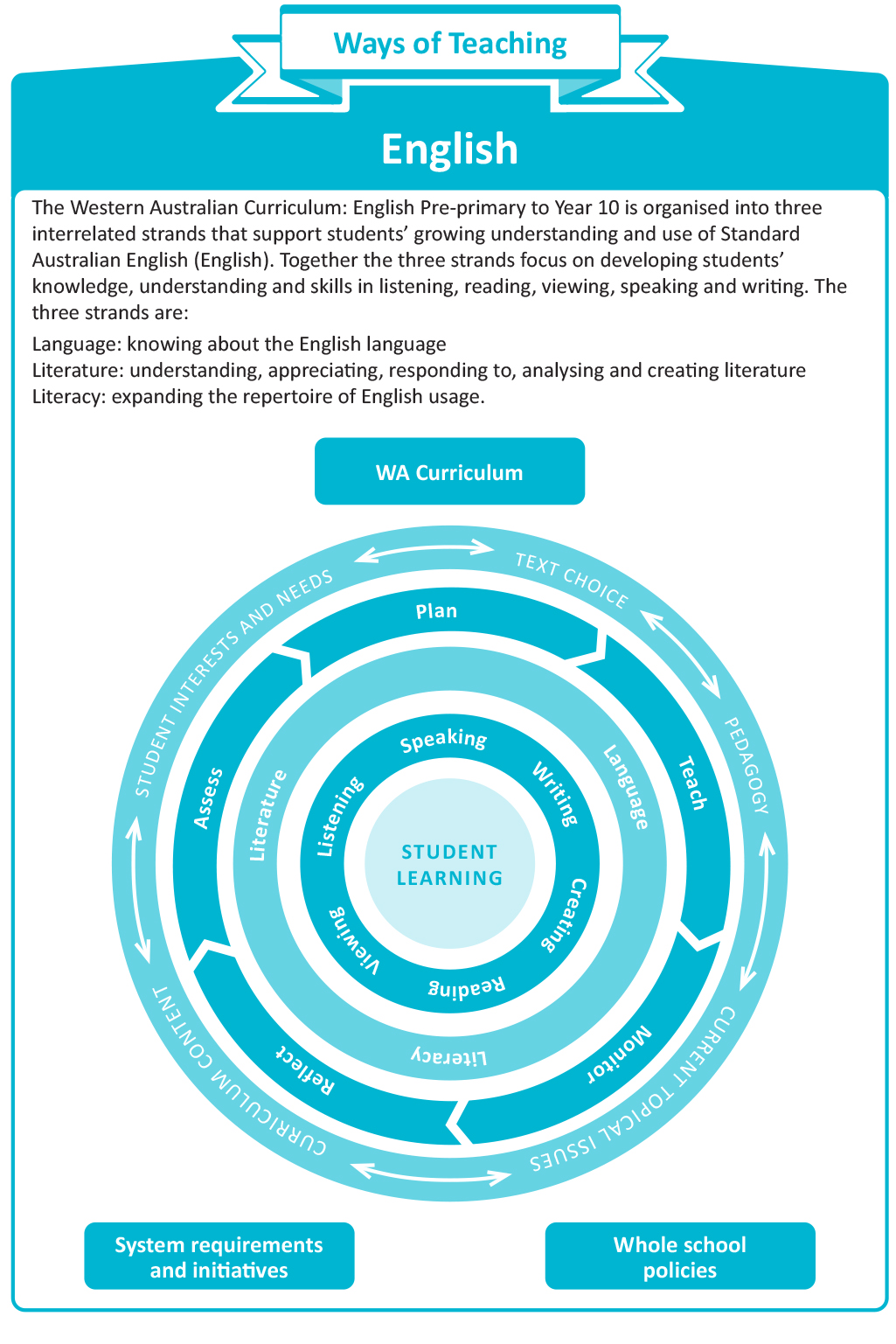The ‘ways of teaching’ aims to support teachers with planning for curriculum delivery across the years of school, with the teaching in each year extending learning in previous years.
The ‘ways of teaching’ complement the principles of teaching and learning in the Western Australian Curriculum and Assessment Outline (https://k10outline.scsa.wa.edu.au/). The principles focus on the provision of a school and class environment that is intellectually, socially and physically supportive of learning. The principles assist whole-school planning and individual classroom practice.
English
The nature of teaching the interrelated strands and modes which make up the subject of English means that delivering the curriculum to students across P−10 will vary dependent on context; teacher preference and style, including pedagogy; audience; purpose; text choice and current topical issues. The cognitive and developmental needs of students form the basis of decision-making, in order that students will meet the Achievement Standard, when taught the relevant curriculum content for their year level.
Engage and encourage students to: | Application |
Enjoy | - an educational journey that is fair, equitable, valid and reliable
- a learning experience which is based on their prior learning, needs, interests and experiences
- opportunities to engage in decision-making and ask questions
- authentic activities which appear meaningful, purposeful, relevant and connect to the real world, including local and international contexts
- the aesthetic value of a wide selection of text types
- exploring their curiosity and creativity while engaging with the curriculum content
- participating with peers in collaborative behaviours
- in-depth learning, based on logical connections between what they know and what they need to learn next
- a sense of agency and voice
- empowerment and resilience through risk-taking.
|
Create | - a range of texts using problem-solving, critical thinking and communication skills
- a range of texts using technology to enhance the accessibility and presentation of information
- texts for a range of purposes and audiences.
|
Interpret and analyse | - a wide range of texts and text types grounded in familiar and unfamiliar social, cultural and historical contexts
- a variety of viewpoints and perspectives through a selection of texts
- formative and summative feedback provided to progress in their learning.
|
Evaluate and reflect | - using appropriate metalanguage
- on social, historical and cultural issues of the past, present and future to shape informed personal opinions as active, informed global citizens
- their learning experiences to continually consolidate their learning.
|
The graphic below is a visual representation of ‘ways of teaching’ English.

|


 English P–10 Scope and Sequence for teaching in 2024 (DOC)
English P–10 Scope and Sequence for teaching in 2024 (DOC)